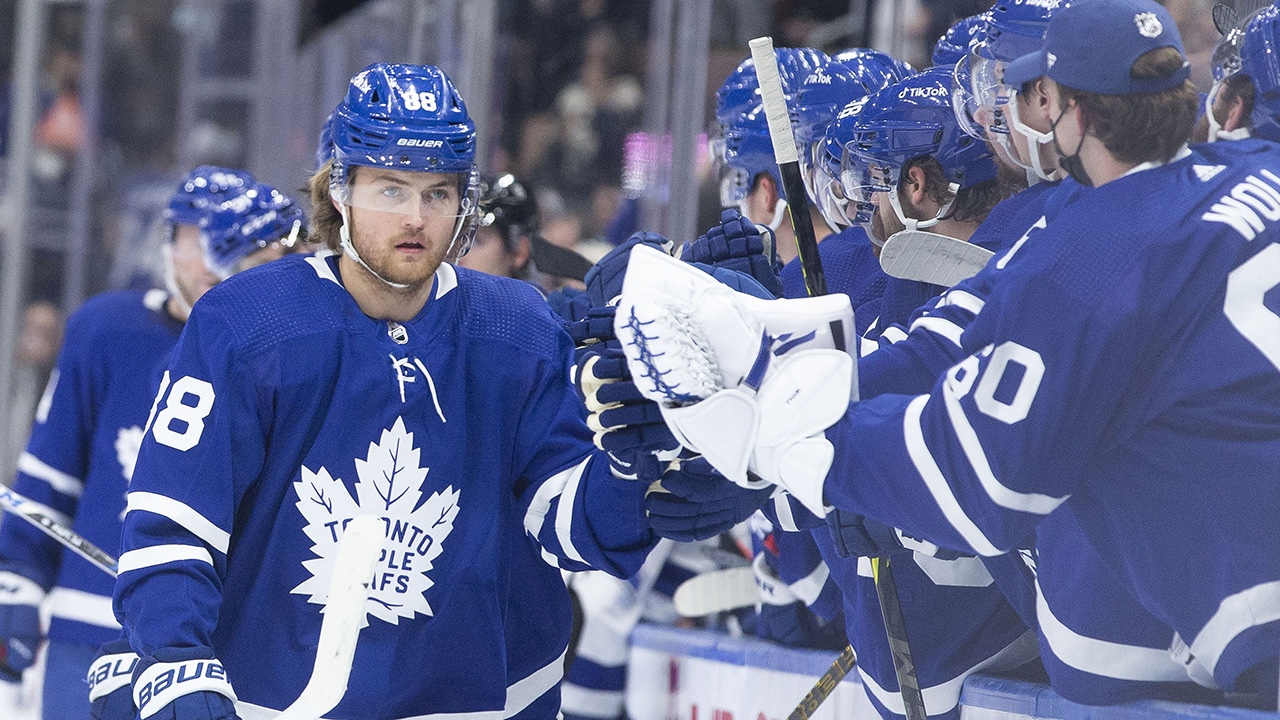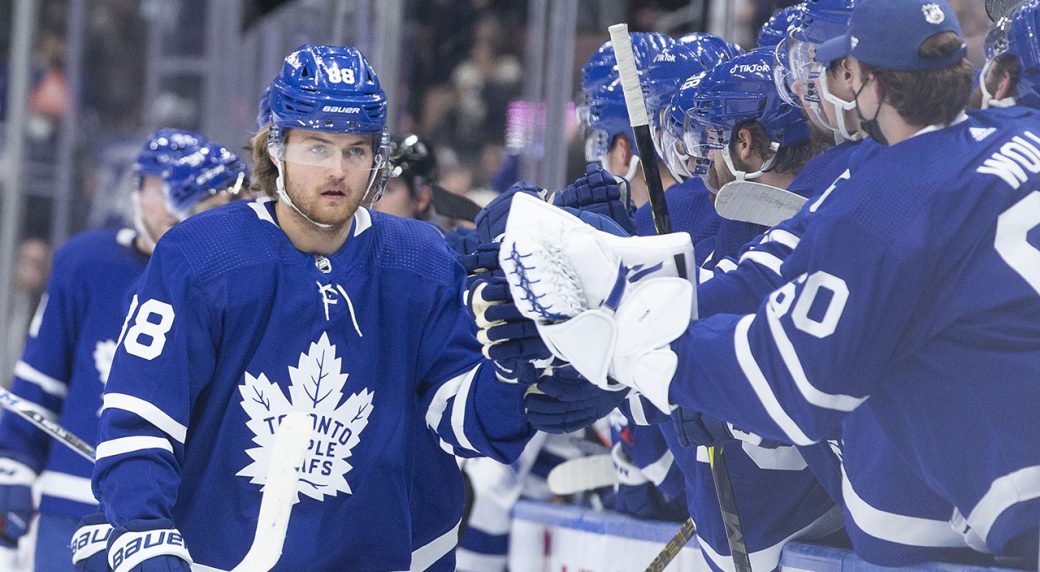

It’s something coaches are eager to impress upon their organizations, in the NHL sure, but in junior, at small colleges, and all the way down into minor hockey. “That’s Pelicans Hockey,” they tell their teams. “That’s the way the Bulldogs play.”
“Let’s show them what the Marauders are all about.”
There’s a desire to impress upon the players a collective mentality, a shared set of priorities for the group that can help them stand out from the pack by eliminating any questions about how to operate on the rink.
There’s a reason this happens just about everywhere, in men’s and women’s hockey alike, and it’s not because the whole of the hockey coaching community from its grassroots to its highest echelons collectively believe some fantasy. When a team has an identity, it helps them block out what doesn’t matter, focus on “what they do,” and challenge opponents to find a way to handle them. They are more likely to be proactive than reactive, the puncher rather than the punchee, and in hockey, eliminating those little hesitations can be the difference between poking a puck past a D-man on the wall and going for a breakaway, or failing by a millimetre and getting hemmed in their own zone, giving up chance after chance the other way.
When I look at the Calgary Flames this season under Darryl Sutter, I do not see a structurally different team to the one that failed to make the playoffs in the all-Canadian division behind the Montreal Canadiens. There are times where how they play looks different, but that’s fundamentally a product of the lack of hesitation from confident athletes who come at you and keep coming more than the outright switching of forecheck structures.
I give the Flames and Brad Treliving credit for one thing in particular: when they brought in Sutter, they didn’t hand him the exact same roster for another season and say “This instrument is broken, but try to play it anyway.” They added to their team in a way that would suit the identity of their coach’s past (winning) teams. They said “Here’s Blake Coleman and Nikita Zadorov and Erik Gudbranson and Tyler Toffoli,” big, strong veteran dudes who are built to play “Darryl Sutter hockey.”
Two seasons ago the Flames were the 23rd-tallest team in the NHL, the 18th-heaviest, and the 15th-oldest. This season they’re the sixth-tallest, the fifth-heaviest, and sixth-oldest. Sutter knows how to play the drums, so they didn’t bother handing him a piccolo. And these days when the puck drops in Calgary, the drumline rolls.
It’s a familiar identity to the one Craig Berube and the St. Louis Blues wore en route to their Stanley Cup championship in 2018-19.
Prior to winning their own Stanley Cups, I think it’s safe to say the Tampa Bay Lightning had an identity: they were high-flying dangerous. From 2017-18 to 2019-20, the Bolts’ rank in goals for in the NHL was first, first, and first. And boy, did that identity lead to success. Their rank in the Eastern Conference standings over those years was first, first and second. They set the record for the most points in a single regular season.
But they were dangerous both ways in the earlier days. Even though Tampa finished first in their conference in 2017-18 and 2018-19, they still gave up goals at a concerning rate for an elite team (13th and eighth in goals against), and often settled for outscoring their problems (which is fine, until scoring gets harder). And in the first two seasons mentioned, the Lightning didn’t win in the post-season. But they were smart enough to not blow the whole thing up.
That’s the crucial detail here. They would never become some smothering trap team, nor did Jon Cooper ask that of them. They simply had to build on to the successful identity they had established. They had something good, and to supplement that, they added a little muscle and defending to the fringes (the additions of Barclay Goodrow and Blake Coleman are stories well-told by now, and David Savard didn’t hurt either) and moved from becoming a team that was 19th in the league in hits to one that was sixth the year they won their first Cup. While winning in back-to-back seasons, they never became a team that cracked the top five in goals against per game, and they didn’t have to. They had to own who they were first (a scoring team), and fill in around it. It may seem risky to bring in players who don’t fit a team’s identity, but when you believe that it’s imbued enough in the core of a group, you can add variety effectively.
To bring this all around to this season and the only Canadian team ahead of the Flames in points percentage: what does this mean for who the Leafs are and what they should do going forward? We’ve just described two teams going in different directions with their respective identities and finding success.
I think it’s safe to say that the Leafs have an identity — which is half the battle — but there are questions about whether that identity can possibly win in the playoffs. Over the past five seasons in goals-for they’ve finished fourth, fourth, second, sixth, and they currently sit fourth. In terms of goals-against they’ve been 12th, 20th, 25th, seventh, and this year sit 12th. That’s right, fourth in goals for and 12th in goals against this season — the same as five years ago.
So the Leafs are, primarily, a team that does not struggle to score, but is also prone to giving up a little too much against when compared against the best teams. They aren’t physical, but they can be dazzling. With what we’re talking about, would it be better to add more skill and “lean into their identity” like the Flames did with their additions? Or would the Leafs be better to go the Tampa Bay route and trust that their identity would remain even if they added a different style of players? (And if you believe Toronto should scrap its identity entirely that’s fair too, but an entirely different conversation.)
I’m prone to believe that it should be a fairly easy call for the Leafs leading up to the deadline. That core of theirs is not a part of their identity, they are the identity. They are those goals for and against numbers in human form. As long as Auston Matthews, Mitch Marner, John Tavares and William Nylander are around this is who the team is. The better you supplement the players around those players the lower you can drive the goals against, but the goals for seems unimpeachable.
It’s true that the Leafs’ offence has dried up at times in the playoffs, but to me that’s a problem more likely solved by the personal growth of the stars and some good fortune (like say, not having the team captain eliminated in the first game of a playoff series) than it is likely solved by adding another skill player — forward or defenceman — who doesn’t play physical as a priority. You don’t always want to chase what other teams did in the past to win, but what Tampa Bay did is a decent blueprint for how the Leafs can now build.
These pre-deadline days are fun for all the potential names you see floated out there as possible additions (for example, Elliotte Friedman has mentioned he personally would like the add of JT Miller — a guy who’s both offensive and feisty — for the Leafs, if Jake Muzzin is out until the playoffs).
.@FriedgeHNIC explains why he thinks J.T. Miller would be a good fit for the #Leafs.
Full chat with @JeffMarek:
https://t.co/BytOsHY6Kr
https://t.co/4m5soVIaAl pic.twitter.com/WzjXe6OYG5— Sportsnet 590 The FAN (@FAN590) February 23, 2022
But the more I hear offence-first or offence-only names (defencemen like John Klingberg or Jacob Chychrun), and think of the potential acquisition costs, the more I think the Leafs are best just owning who they are, throwing that core over the boards to do the scoring, and acquiring players who look more like missing puzzle pieces than additional offensive ammo. The bet they made on their Big Four is too big to then have to concern yourself with supplementing — they’re either good enough at the thing they do (score) or they aren’t.
An identity is crucial to having success, and I believe the Leafs have that part down. As long as this core is together, that identity isn’t going anywhere. Trading for different-style players — the more physical and defensive and cheaper types — isn’t going to take away from that. The hope is that, as it did with Tampa Bay, it’s only going to fill in what’s already a pretty well-assembled puzzle.
The value of team identity and what it means for the Leafs at trade deadline
Source: Pinas Ko Mahal

0 Mga Komento